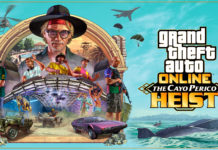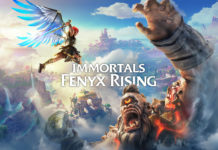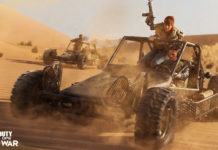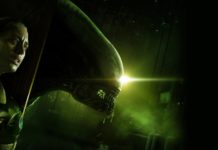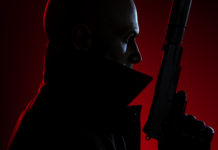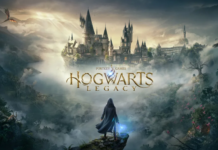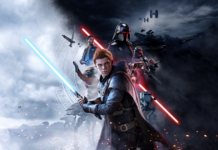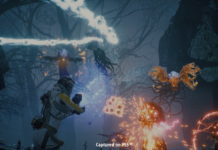Titan Books has released their latest entry in the multifaceted world of pop culture sensations: a stunning colored art book documenting key notes in the Halo series. Halo: The Great Journey: The Art of Building Worlds is a 192-page hardcover with a smooth cover and sweeping, painted interiors that quietly display the best of Halo—from its ringed sci-fi worlds to its war-born technology, distinct alien races, and frontline characters. It's a quiet and unexpected exhibition only because the book's sleek composition and polished pages catch the unsuspecting off-guard. This isn't a testament to roughhouse multiplayer or teabagging jokes. This is a moment of silence in between generations, the moment when one decade of a blockbuster hit ends and a whole new age begins. The confirmed second trilogy in the Halo series, in development by 343 Industries, marks the return of Master Chief and Cortana and begins the future of Halo.
We talked with Halo 4 Senior Art Director Kenneth Scott and the book's author, Martin Robinson, about this new chapter in Halo history. To speak better about the future, they looked to the past—and the present.
"There is such a rich legacy as a universe, and so much deep, wonderful fiction to pull from," Scott reflected. "But my first love and the thing that keeps me coming to work daily feeling like I'm doing the right thing, selfishly, for myself as an artist, is this team. It's an honor to rub shoulders with the caliber of folks we've collected, and it's a constant source of pulse pounding and challenging inspiration. This is a mecca for game talent and a great place to learn. I'm a better artist because of them."

A mecca of game talent indeed, as a wealth of video games, novels, comic books, and animated movies orbit around the single property. "There's definitely a bright future for it, both in terms of the games and beyond," Robinson said. "The [The Forerunner Saga] series is shaping up really well, and I can't wait to see how it feeds into Halo 4. Seeing how there's a renewed emphasis on the Forerunners for next year's game, I'm sure it will."
Even the animated films have seen success. "They're a brilliant achievement," Robinson continued, "and what I really like about them is how they marry the aesthetic of Japanese animation with that of Western video games. It's surprising what a great pair the two make. "
If you haven't caught on, art and aesthetics were a major theme in our interview—from the artists who craft the environments to the different mediums Halo translates into. It's no wonder Martin Robinson spent his time collecting the works of Bungie, Microsoft, and now 343 and collaborating with publisher Titan Books to make the big picture perfect. Whether it's Eastern design or completely otherworldly, the visual majesty of Halo is a large part of what makes the series so identifiable.
"The Forerunner architecture's a marvel," Robinson said, "both in the game and for us as players as we explore it. It inspires a real sense of awe, whether that's Halo itself, the Ark or the interior of one of the Forerunner installations. They're foreboding—mysterious yet at the same time so beautiful."

Architecture is a strong focus in Robinson's book. At several points he compares some of the structures in the games to the triumphs of real-life architect Frank Lloyd Wright. But the visual appeal doesn't end there. When it comes to the various lifeforms, looks and power go hand-in-hand.
"Halo's aliens work both as brilliant beasts but also as great little slices of game design," Robinson explained. "When you come up across a wiry Elite, you know to expect them to flank you and put up a fight. Come up against a Hunter, and you know to cower away and prepare for a mighty tussle. Come up against a Grunt, and you know it's safe to just smash them in the face with the butt of your gun."
And when addressing Master Chief, who has become an icon to this generation of gamers and stands silent and proud in the images captured in the book, Robinson describes him on the same level as a Clint Eastwood character. "The mute and masculine Space Marine has become something of a cliché, but there's something much stronger about the Master Chief. He's got something of old Hollywood about him, with that kind of brooding menace backed up by a strong morality that makes him the hero that he is."

From its beginnings to its prominence in culture now, Halo has been both innovative and impressive, able to earn the loyalty of legions of fans. Everyone has a favorite scene or quality of the game they like most. Robinson says that for him, "it's still the Silent Cartographer, when you storm the beach with the Chief and the UNSC. It's more than my favorite moment in the series. It's one of my favorite moments in games full-stop."
To Kenneth Scott, Halo's crowning achievement is not its gameplay or even its importance to the first-person shooter genre, but its perspective. "The thing I'm fondest of," he says, "is that Halo is not the cynical view of the universe [that] its competitors are."
For more on Halo: The Art of Building Worlds, visit titanbooks.com.

